For Samantha Lindgren, the next step in her Slow Fashion life will be making her own underwear. “But I haven’t gotten there yet.”
Sewing has been her hobby for much of her adult life, but three years ago, she hit a breaking point. There was a discounted Ralph Lauren skirt involved, one with a zipper that immediately broke. She headed to one of the final frontiers of home sewing: T-shirts and jeans.
“I did not want to go into another dressing room and try on a million different pieces of clothing,” Lindgren says. Because when she did, nothing seemed age appropriate or remotely stylish.
Looming over all of this dissatisfaction was her then-new, critical awareness of Fast Fashion. She’d had it with the cheapness of it, with seams that popped and zippers that broke. But on a deeper level, it was about the fashion cycles designed to make customers into mad, never-satiated consumers, indulging in ever new styles that tax the earth’s resources and its human ones. Her frustration led her to found A Gathering of Stitches, which has been offering sewing retreats, classes and studio space in Portland for three years to like-minded people.
What you put on your body for clothing might be the least talked about element of the sustainability movement. But it’s also the one where the average human being has the most potential to make a difference, even more than your trudges through the snow to the compost heap.
FAST FASHION NATION
If you’ve never heard either the term Fast Fashion or Slow Fashion before, rest easy. Neither get the explanation, or the discussion, they deserve. In one of the seminal books about the subject, “Over-Dressed: The Shockingly High Cost of Cheap Fashion,” Elizabeth L. Cline traces the term Fast Fashion back to the 1990 publication of a Vogue article titled “Fast Fashion: Americans Want Clothing That is Quick and Easy.”
At that point, Fast Fashion was seen almost as a movement of democratization – Americans had traditionally spent a relatively high amount of their annual income on their clothing and now, thanks to retailers like the Gap, offering cheap but stylish clothes, they didn’t have to. Apparel became one of the few household expenses that consistently went down over time.
Consider this: In 1900, the average American family had an annual income of $750 and spent 15 percent of it on clothing (and mended it until it was ready for the scarecrow). By the 1950s, that percentage dropped to about 10 percent. In 2015, the most recent year for which data is available, the U.S. Bureau of Labor Statistics found that the average American consumer “unit” (that could be a family or an individual) spends just 2.7 percent of their income on apparel. Quantity wise, they get a lot for their money. Quality is an entirely different question. Fast Fashion is akin to fast food.
The term Slow Fashion was apparently coined by author and eco textiles consultant Kate Fletcher in a 2007 article comparing ethical fashion to the Slow Food movement, which originated in Italy in the 1980s in opposition to the proliferation of cheap junk food. Slow Food encourages the consumption of local, regional foods and natural farming practices. Slow Fashion aims for improved working conditions, environmentally friendly textile manufacturing and working with regional fibers as much as possible.
The parallels, says Lindgren, are obvious. “The idea of knowing where your clothes come from, it’s the same as Slow Food. Were the fibers treated ethically? Was it grown in a way that was sustainable? Was it made by someone who got treated properly? Did it pollute the environment in the process of being made?”
These are the questions she started to ask herself when confronted with the temptation of, say, a $5 T-shirt.
“There is just no way that T-shirt can be produced and shipped and sourced for $5,” Lindgren said. “Whoever made that T-shirt wasn’t making anywhere near a living wage. And whatever it is made out of has to be not much more than spit and lint from someone’s dryer.”
SHOP ‘TIL YOU DROP
Awareness of the issue was heightened in 2010 when the New York Times reported that mega-retailer H&M was discarding unpurchased clothing, much of it deliberately slashed so that it couldn’t be worn, in trash bags on the street. Another flash point came in 2013 when the collapse of an eight-story factory called Rana Plaza in Dhaka, Bangladesh, killed more than 1,100 people, most of them female factory workers working for pennies. Books and exposes followed, including a 2015 documentary “The True Cost,” rife with footage of polluted rivers and landfills full of discarded garments that will not break down for hundreds of years, and which in the meantime leach chemicals, including dyes, into the ground.
By 2013, 97 percent of apparel sold in America was made overseas, according to the American Apparel & Footwear Association. That is a relatively recent phenomenon. In “Overdressed,” Cline reports that in 1965, imports accounted for less than 5 percent of apparel sold in America. Clothing manufacturing left the United States at an astonishing rate, with the last big gasp happening between 1994 and 2005, when nearly a million textile and apparel jobs were lost. Reversing that trend completely is unlikely, given the practical obstacle that much of the industry’s infrastructure, like the heavy equipment to make fabric and clothes, was shipped overseas. And the cultural one that Americans have developed a taste for cheap fashion. So cheap that it feels easy to dispose of; the average American throws away 82 pounds of textile waste every year, according to “The True Cost.”
In the last five years, as part of a Slow (or slower) Fashion movement, a small percentage of manufacturers have begun returning to the United States to make non-luxury apparel, particularly in the Los Angeles area, where companies such as American Apparel and Karen Kane are based. Some consumers are willing to pay more for the “Made in the USA” label, or for sustainably made, luxury fashion.
Where does Maine fit into the Slow Fashion movement?
“I feel like in the next five years we are going to see a lot more of it,” Lindgren says. “It is just starting to raise its head.”
Tradition gives the state a leg up. This has always been a place filled with people who like making things and have a tendency to take care of what they’ve got. Both are key components for an individual’s participation in the Slow Fashion movement, says Sasha Duerr, founder and co-director of the Permacouture Institute, an Oakland, California-based nonprofit that provides education and advocacy for “regenerative design in fashion and textiles.” (The name is a spin on Permaculture.)
“It’s about mending and sharing it or giving it to someone else,” Duerr says. “Stewardship really. Then you love it again because it is new, and that is a lot of what fashion is, that feeling of self-expression and connection.”
As it happens, Duerr, who has published books on natural dye processes, grew up in Maine. Her dad was a Bowdoin graduate who met her mom here and went back to the land, biodynamic farming in South Gouldsboro. In her early 20s, Duerr took a workshop at Darthia Farm in Gouldsboro that instilled a passion for working with natural dyes. Maine’s larger role, Duerr said, may be to offer inspiration for practioners of slow fashion.
“It may never be an industry hub,” Duerr says. “But Maine has such rich resources, and so many people with that ability to create slowly from one’s environment.”
Like Hannah Sol Rhea, whose Etsy shop has featured $585 goat skin vests she made entirely from hand, starting with tanning the hides. The sewing takes 10 to 15 hours. Right now she’s working on a dress woven from the fibers of a basswood (linden) tree, soaked in a pond for three weeks and then woven on a makeshift loom she constructed in the woods. (She’s definitely going to wear it.) And yet, she grew up in Freeport, “the shopping mecca of New England,” she says, laughing. She’s self taught and didn’t skin her first squirrel until she was 17.
At 24, she is moving into deeper “conscious consuming” all the time.
“I definitely have some modernized clothing,” she says. “But as time goes on, I hope to have none.”
“People don’t understand how easy it is to make things yourself.”
FASHION SCHOOL
Rhea might be the most extreme practitioner of Slow Fashion in Maine, but there is plenty of middle ground, and it’s expanding. In 2013 MECA, the Maine College of Art, established a Textile and Fashion Design major, thanks to a gift from philanthropist and Burt’s Bees co-founder Roxanne Quimby.
Charlotte Mackenzie Atkinson is a new major, and as a freshman, she’s taking a Slow Fashion class. She’s been weaving, spinning and felting. On a recent field trip to Lana Plantae alpaca farm in Buston, she and her classmates learned how to dye wool with natural dyes. (Marcia MacDonald’s Lana Plantae is the headquarters for Maine Fibershed, the local chapter of the national group Fibershed, which develops and encourages regional resources for independent textile producers – the name, again, references a food-related term, foodsheds.)
Atkinson’s final project for the Slow Fashion class is a felted skirt with a tulle underskirt. It’s given her a fresh appreciation for the value of Slow Fashion, even for a young woman with a well-developed thrifting habit. “It has really opened my eyes to what I should be buying,” she says. “It definitely makes me value quality clothing a lot more, especially handmade, because this process is taking a long time.”
One of her future academic options is to take a pattern drafting class from Jill McGowan, a Maine designer best known for her elegant white shirts. McGowan grew up with a grandmother who worked in a mill and a mother who made sewed for her four daughters. She spent her early days in the business working for C.F. Hathaway, the now defunct Waterville-based shirtmaker. The designer saw the Fast Fashion train approaching in the 1990s, when conversations among executives included blatant acknowledgments that shirts were being made to last only one season. “Either you get on that train or you don’t,” McGowan says, sitting in her cozy workroom in downtown Portland. She opted not to, and the business she runs with her sister Jolene uses only sustainably milled fabrics, most of which are stitched in Maine, with an intense focus on quality. A beautifully fitted white shirt costs around $165. They have about 20 employees.
Jill McGowan doesn’t claim to be a practitioner of Slow Fashion, but in many senses she fits the mold. While stores like Zara and H&M are receiving shipments of new lines every few weeks, she puts out just two seasonal lines, spring and fall. The company has adapted to the garment industry’s fast-pace by offering flexible ordering to wholesale vendors. There’s no minimum, and turnaround is fast. For instance, stores can order fall items in holiday fabrics as late as November, and seamstresses in Maine can fill those orders in a couple of weeks versus six or seven from overseas. That speed offsets higher labor costs. “We see that as an advantage,” Jolene McGowan says.
Lately, they’ve felt less alone in the American manufacturing sector. “I don’t know what the numbers are, but it’s booming,” Jolene McGowan says. The major at MECA is another reason to feel encouraged. “There is so much potential,” Jill McGowan says.
THE SEWISTS
Mary Zarate opened Z Fabrics in Portland 10 years ago, in a tiny shop, less than 400 square feet, on Congress St. (In a nice nod to Slow Fashion, that’s where Plum consignment store is now.) Five years ago, she moved to the lobby of the Time & Temperature building, where she teaches beginner and intermediate sewing classes, and when she’s not doing that, sells fabrics, notions and patterns. “It is crazy town over here,” Zarate says.
The landscape for the home sewer, or “sewist” if you’re being hip, has changed radically since Zarate went into business.
“Back then, there was no Pinterest, no Craftsy,” Zarate says. “The Internet was kind of in its infancy in terms of creating this community.” Today, she said, if she posts a photo of something fresh on Instagram, her customers might show up within hours to buy. She opts to stock only independent pattern makers who self-publish and have huge followings, “like rock stars.”
The same is true in the knitwear business, where designers such as Knitbot’s Hannah Fettig and Quince & Co.’s Pam Allen have international reputations. Carrie Bostick Hoge designs Madder knitwear and publishes a new magazine, “Making” out of Freeport. These designers are such name draws that Bristol Ivy offers retreats where participants can bring all their knitting dilemmas and maybe do some yoga as well. (Retreats are the new thing; Lindgren is moving A Gathering of Stitches to Biddeford in 2017 and will refocus on that part of her business.)
Sewing machines have evolved too, and are more user friendly, she says. For the adventurous sewist there are sergers, machines intended for jersey fabrics (like T-shirts). They retail for between $400 and $600, Zarate said. “This holiday season alone I have sold five sergers,” she says.
She had just sewed a couple of shirts for toddlers before the phone rang. With the serger it’s that easy, she said. And she was upcycling, using materials from discarded garments to make the tiny shirts. But something about the process had reminded her of the more general problem with the garment industry. She’d barely squeezed one shirt for a toddler out of a shirt intended for an adult woman.
“It looks awful on you and the sizing is all weird,” she says. “I think people are really sick of it.”
Michelle Beckett is. She’s 39, says shopping at Forever 21 is “not my jam,” and after taking classes with Lindgren has enough confidence to refuse the wrong “bargain.” Like that denim shirt she saw in Freeport this fall. It was close to what she wanted, but the fit was just OK and there was an “awkwardly shaped pocket on the top of your boob.” Five years ago, she would have bought it. “I probably would have worn it twice, then to the back of the closet and then to Goodwill or the landfill.”
Instead, she made her own version of a denim shirt. She and other sewists don’t want to mislead anyone into the thinking that sewing is a cheap way to dress oneself. “There’s this Internet meme, ‘Why buy it for $7 when you can spend $198 at the craft store to make it?’ ” she jokes. Leaving out her time, which of course, is money, the shirt cost her about $18 in materials, she estimates.
But as that credit card advertisement puts it, there’s a priceless component to it. Because when she wears clothes she made, she feels good. “I didn’t just passively pick this out in the store,” Beckett says. “I made this happen. There is more of a connection.”
Send questions/comments to the editors.


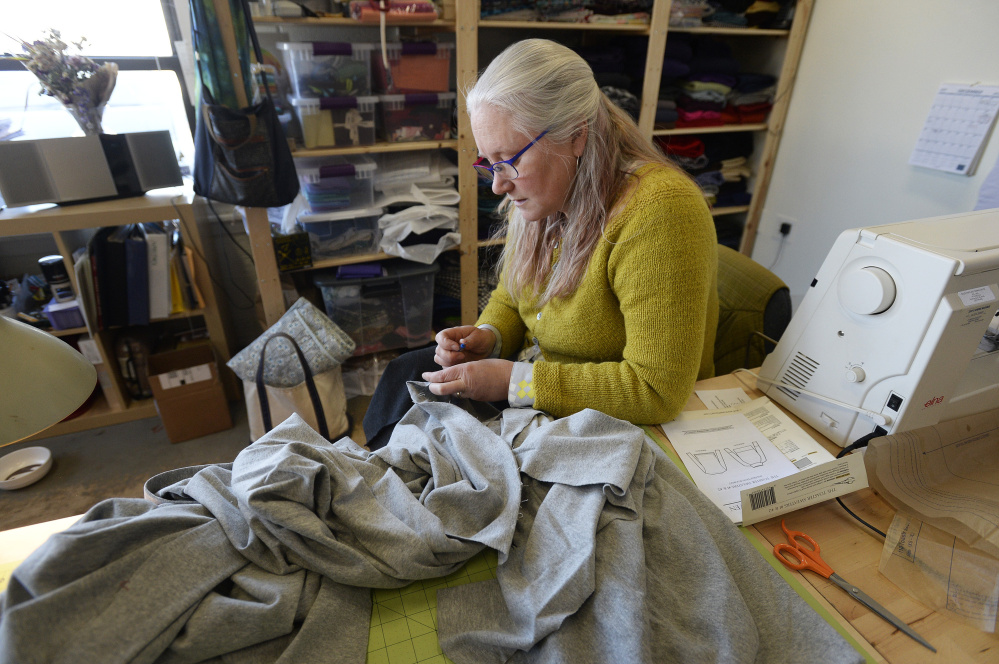
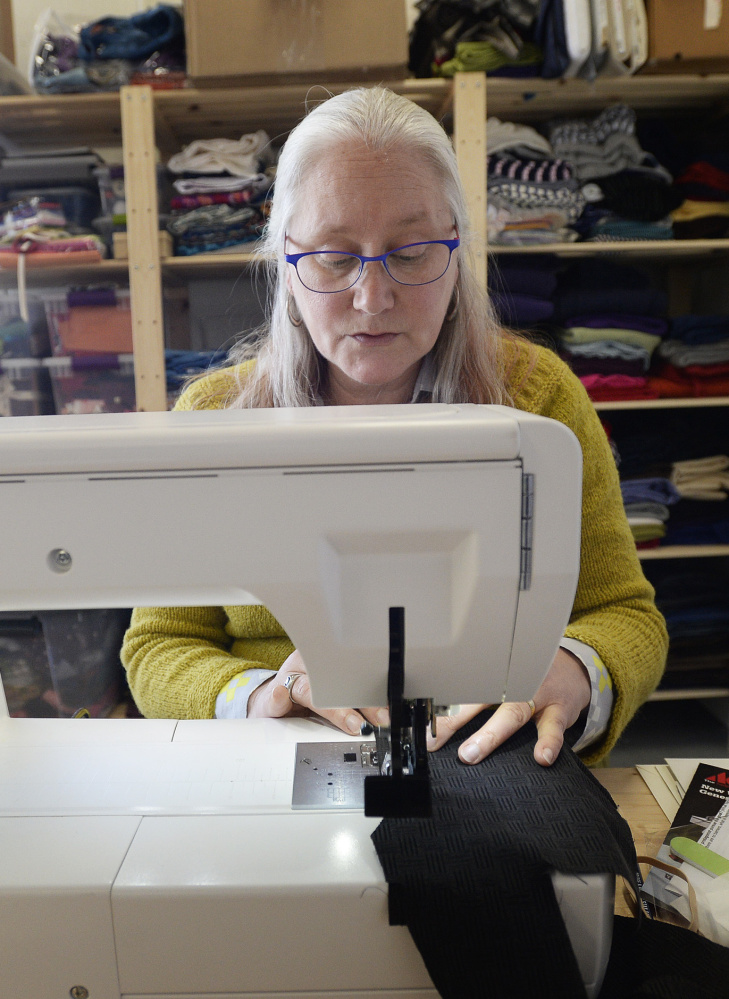
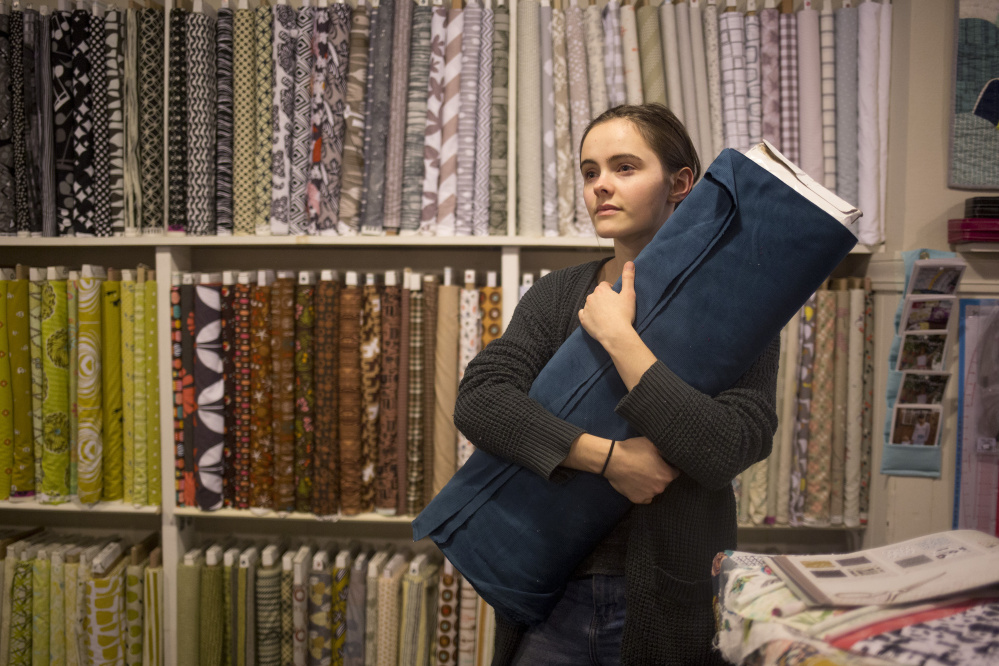
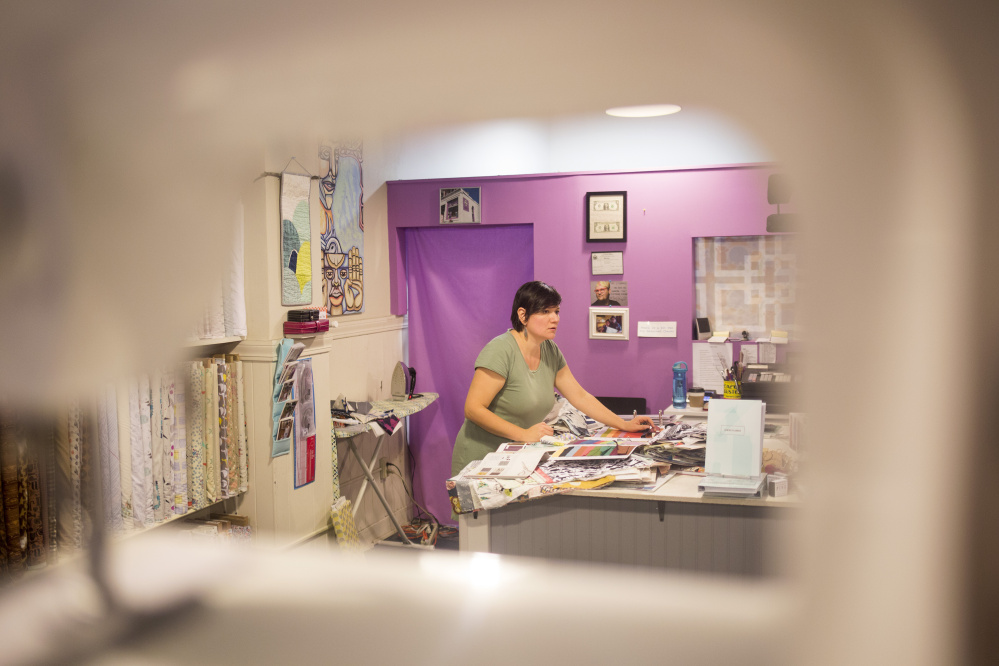
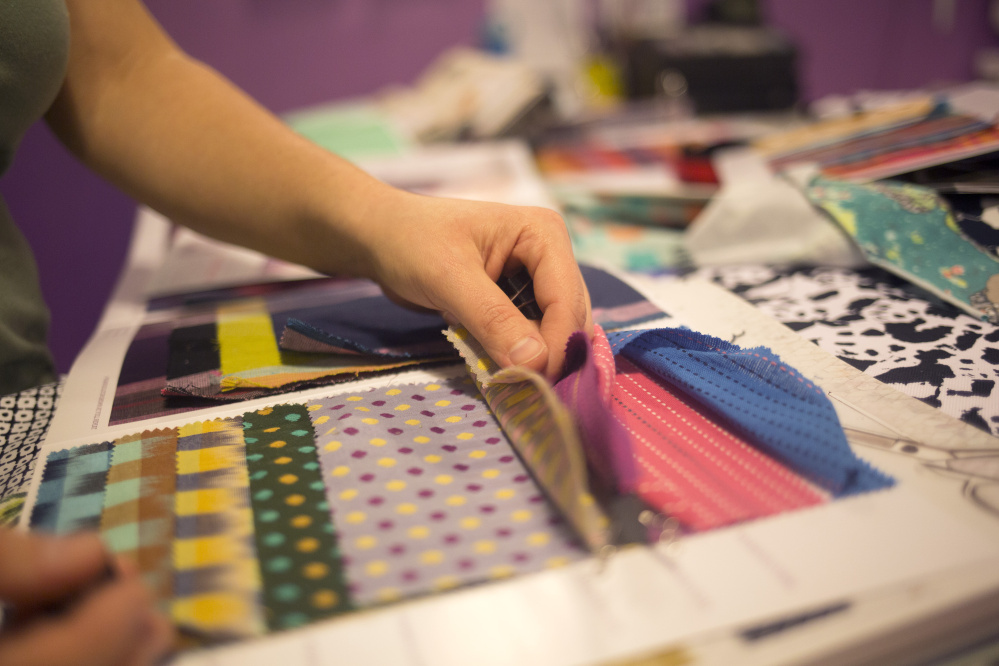
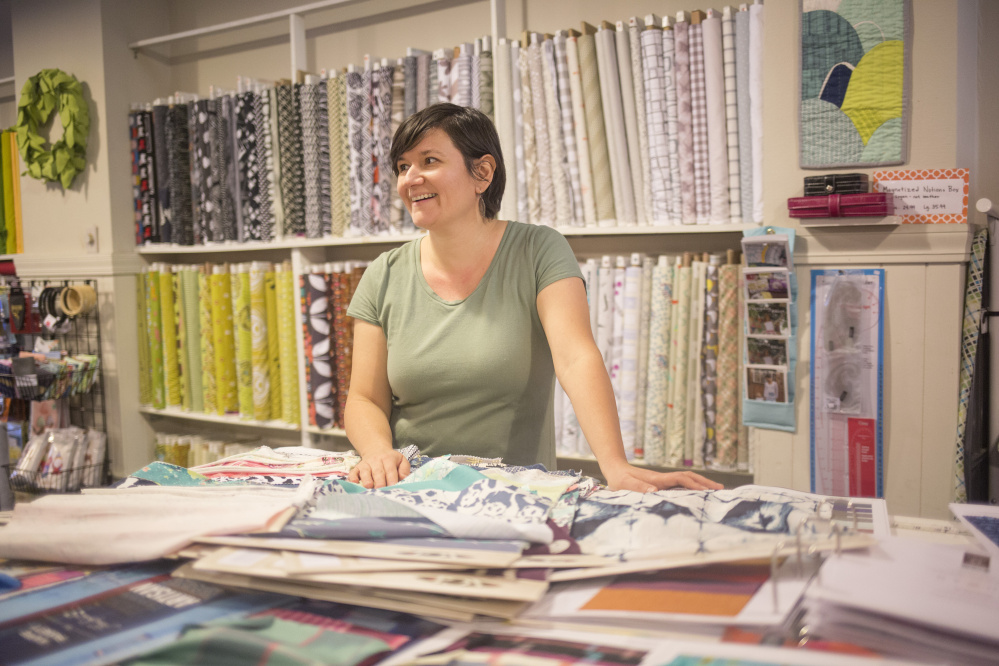

Success. Please wait for the page to reload. If the page does not reload within 5 seconds, please refresh the page.
Enter your email and password to access comments.
Hi, to comment on stories you must . This profile is in addition to your subscription and website login.
Already have a commenting profile? .
Invalid username/password.
Please check your email to confirm and complete your registration.
Only subscribers are eligible to post comments. Please subscribe or login first for digital access. Here’s why.
Use the form below to reset your password. When you've submitted your account email, we will send an email with a reset code.